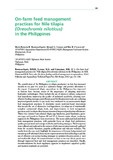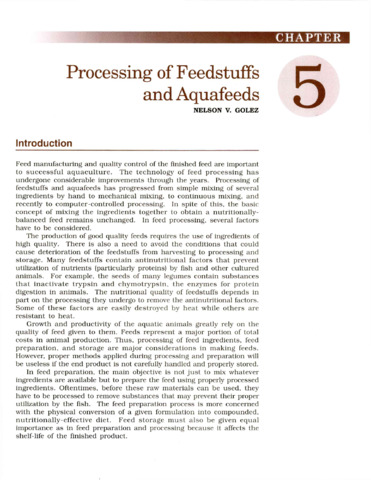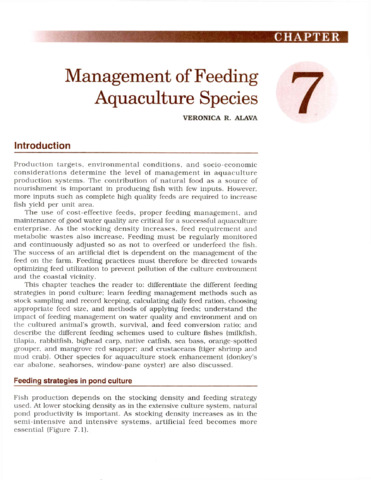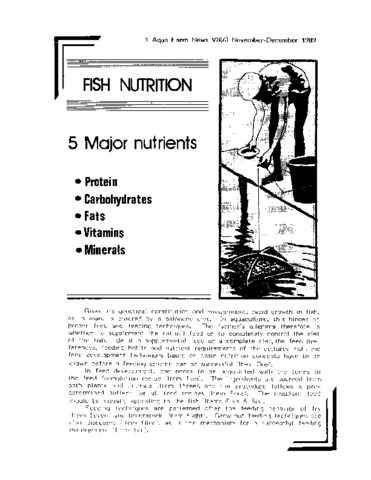On-farm feed management practices for Nile tilapia (Oreochromis niloticus) in the Philippines
- Global styles
- MLA
- Vancouver
- Elsevier - Harvard
- APA
- Help

Download URL
www.fao.orgDate
2013Page views
5,582ASFA keyword
AGROVOC keyword
Metadata
Show full item record
Share
Abstract
The contribution of the Philippines to tilapia production in Asia has increased steadily in the past five years as it addresses hunger and poverty alleviation in the region. Commercial tilapia aquaculture in the Philippines has improved as farmers have become aware of the importance of adopting innovative husbandry technologies. These include the use of intensive culture, using novel feed ingredients, improving the quality of industrial aquafeeds, adopting cost- effective feeding strategies and efficient pond fertilization methods, and culturing improved genetic strains. A case study was conducted to: a) assess current tilapia feed management practices; b) determine recent nutrition-based innovations that include the use of alternative feed ingredients, the adoption of nutritionally complete commercial tilapia feeds, and improvements to feed management practices; and c) evaluate these factors in terms of improved production efficiencies. Thirty-two farmers from selected tilapia cage hatcheries, pond hatcheries, grow- out cages and ponds in Regions III and IV-A (known major tilapia producing regions in the Philippines) were interviewed. The issues addressed included their farm management practices, with particular focus on tilapia feed preferences; quality, procurement and storage methods; and feeding strategies. Their responses were collated and analysed in the context of information simultaneously gathered from the scientific literature, popular publications and relevant websites. The results from the case study highlight the importance of farmers being trained and remaining well-informed about recent improvements in feed technologies and the use of efficient cost-saving feeding strategies to optimize the production of seed and marketable tilapia. Recommendations on how to increase tilapia production through improved feed and feed management practices are described. Finally, recommendations for local regulatory agencies to implement aquafeed quality and nutrient standards are provided.
Suggested Citation
Romana-Eguia, M. R. R., Laron, M. A., & Catacutan, M. R. (2013). On-farm feed management practices for Nile tilapia (Oreochromis niloticus) in the Philippines. In M. R. Hasan & M. B. New (Eds.), On-farm feeding and feed management in aquaculture (FAO fisheries and aquaculture technical paper No. 583) (pp. 131-158). Rome: Food and Agriculture Organization.
Type
Book chapterISSN
2070-7010ISBN
9789251079782Series
FAO fisheries and aquaculture technical paper; No. 583Collections
- Books and Book Chapters [123]
Related items
Showing items related by title, author, creator and subject.
-
Processing of feedstuffs and aquafeeds
Golez, Nelson V. (Aquaculture Department, Southeast Asian Fisheries Development Center, 2002)This chapter will help the reader understand and appreciate the basic principles of processing, preparation, storage, and quality control in the preparation of aquafeeds. The material in this section is presented in sequence ... -
Management of feeding aquaculture species
Alava, Veronica R. (Aquaculture Department, Southeast Asian Fisheries Development Center, 2002)This chapter teaches the reader to: differentiate the different feeding strategies in pond culture; learn feeding management methods such as stock sampling and record keeping, calculating daily feed ration, choosing ... -
Fish nutrition
Carreon-Lagoc, Julia; Southeast Asian Fisheries Development Center, Aquaculture Department (Aquaculture Department, Southeast Asian Fisheries Development Center, 1989)





